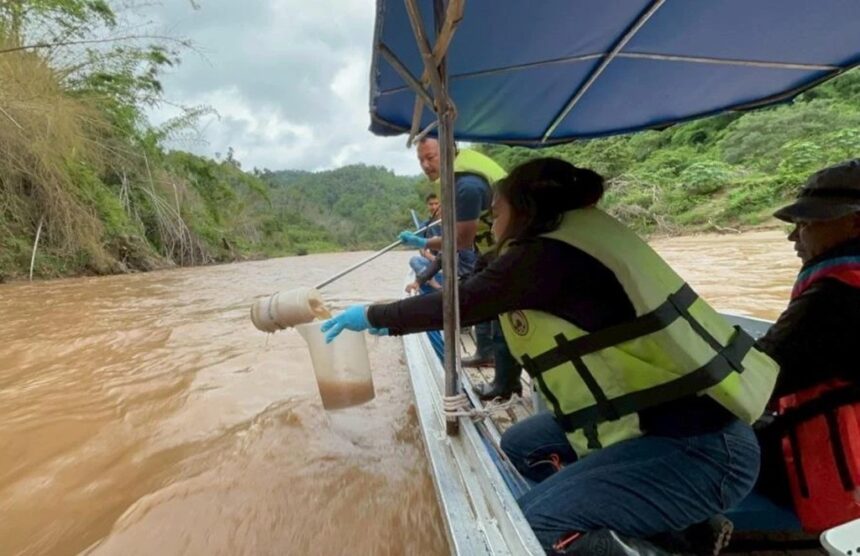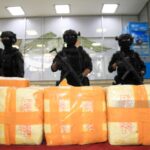CHIANG RAI – Local groups are raising concerns after government officials claimed the water quality in the Kok River is improving. Yet, recent tests from the Pollution Control Department found arsenic levels above safety standards in four rivers.
The numbers show clear signs of contamination, contrary to what officials have reported.
A spokesperson for the Prime Minister’s Office and the CHiang Rai Governor recently shared updates, stating that progress had been made on river pollution in Chiang Rai and Chiang Mai.
Teams from the Pollution Control Department, the Department of Water Resources, and the Digital and Aviation Technology Centre carried out studies and built a shared database during May.
They also began tracking environmental quality and health impacts, set up a task force for cross-border cooperation, and started planning a new water quality operations centre. News headlines claimed, “Kok River Situation Improving,” according to a 31 May report.
However, networks opposing mining in the Wa region of Shan State, Myanmar, which feeds the Kok and Sai Rivers, strongly disagree. The Pollution Control Department’s recent water tests in the Kok, Sai, Ruak, and parts of the Mekong Rivers found arsenic levels above the 0.01 mg/L standard in all three recent checks.
The latest results from May 2025 found arsenic above safety limits in all 11 test locations, including:
- Kok River at Baan Jaderr, Doi Hang, Chiang Rai: 0.016 mg/L
- Mae Fa Luang Bridge, Chiang Rai: 0.014 mg/L
- Border areas in Chiang Mai: up to 0.030 mg/L
- Sai River locations at the Thai-Myanmar border: up to 0.024 mg/L
- Mekong River at Chiang Saen: 0.026 mg/L
Each reading is higher than the approved standard.
Dr. Suebsakul Kitchanukorn from Mae Fah Luang University released an open letter to the Prime Minister. He called for clear evidence supporting claims of improved water quality. He pointed out that pollution reports still show arsenic above safe levels in the Kok, Sai, and Mekong Rivers.
He also raised issues with the slow pace of government action. Six days after a high-level meeting to address the problem, the government was still forming a special task force. The next meeting is set for 4 June, where they’ll discuss new teams for monitoring and cooperation.
Dr. Suebsakul criticized the government for focusing only on the Kok River, even though heavy metal pollution affects all four rivers. He also noted that responses so far target only Myanmar, while China’s role in mining and its influence in the region shouldn’t be ignored.
He urged the government to clarify its stance—whether the solution will be stricter mining rules or shutting down mines completely.
According to Dr. Suebsakul, arsenic in river water poses significant health risks due to its toxicity, especially when consumed through drinking or used in agriculture. Arsenic is a known carcinogen, and it can accumulate in aquatic organisms, entering the food chain if river water is used for fishing or irrigation.
On 5 June, which is World Environment Day, citizen groups, NGOs, and academics plan to gather at Mae Fah Luang Park. They want mining in the Wa region to stop. After events and rituals on the Kok River, they will submit a letter to the Chiang Rai governor.
This letter will ask the Thai, Chinese, and Myanmar governments, as well as the Wa Special Region 2 administration, to address the source of the problem. Leading up to their main event, these groups will hold smaller awareness activities and discussions to keep attention on the issue.














